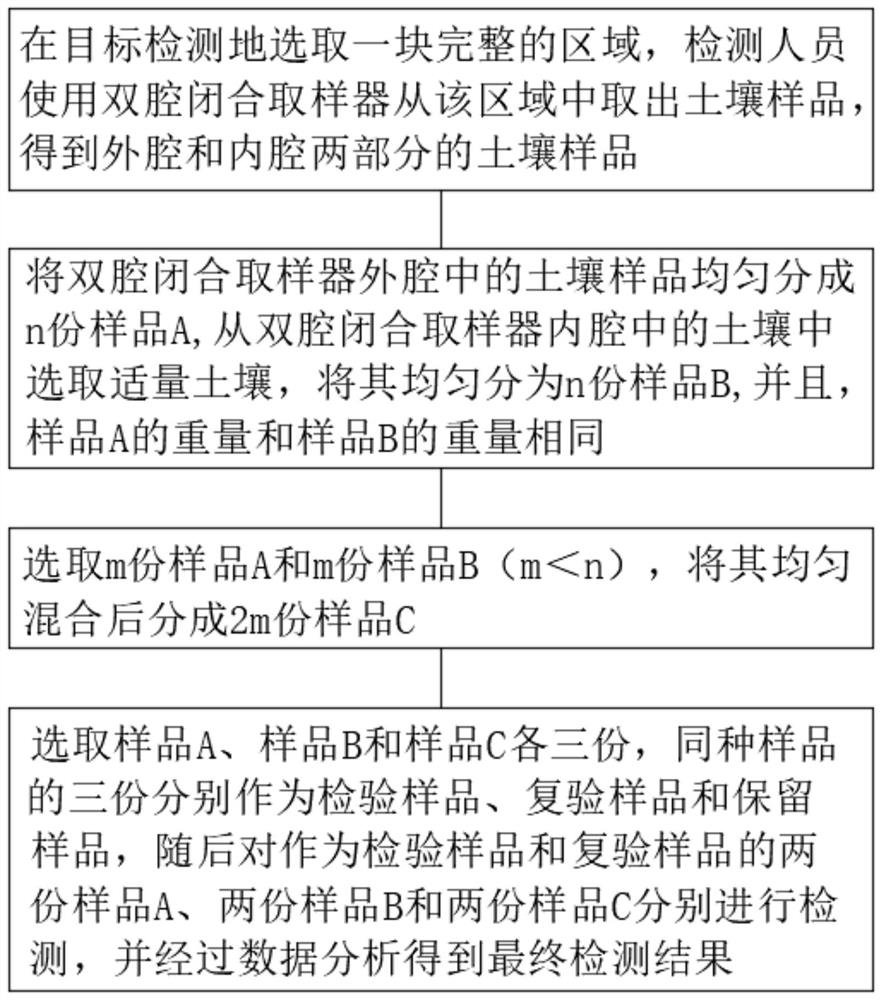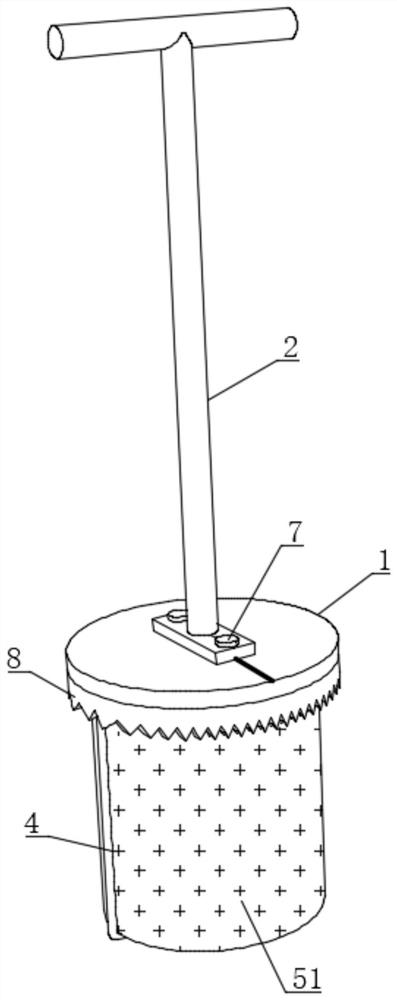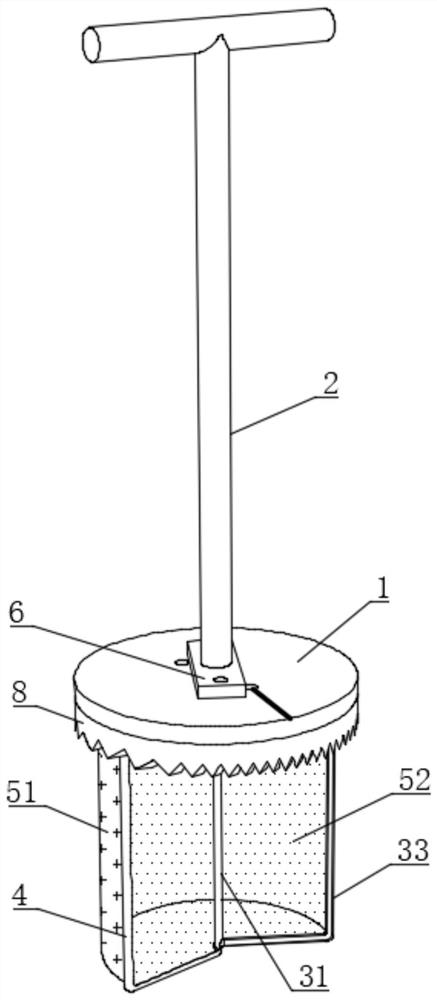Water retention type pesticide residue detection method suitable for spongy wet soil
A pesticide residue detection and water-retaining technology, which is applied in soil material testing, preparation of test samples, material inspection products, etc., can solve the problems of affecting test results, water loss, and reducing the amount of pesticides, and achieves the goal of soil moisture. Effect
- Summary
- Abstract
- Description
- Claims
- Application Information
AI Technical Summary
Problems solved by technology
Method used
Image
Examples
Embodiment
[0044] see figure 1 A method for detecting water-retaining pesticide residues suitable for loose wet soils, comprising a double-chamber closed sampler, the double-chamber closed sampler includes an inner chamber and an outer chamber, and the detection method comprises the following steps:
[0045] S1. Select a complete area at the target detection site, and inspectors use a double-cavity closed sampler to take out soil samples from the area to obtain two parts of soil samples: the outer cavity and the inner cavity;
[0046] S2, divide the soil sample in the outer cavity of the double-cavity closed sampler evenly into n parts of sample A, select an appropriate amount of soil from the soil in the inner cavity of the double-cavity closed sampler, and evenly divide it into n parts of sample B, and the sample The weight of A is the same as that of sample B;
[0047] S3. Select m parts of sample A and m parts of sample B (m
PUM
 Login to View More
Login to View More Abstract
Description
Claims
Application Information
 Login to View More
Login to View More - R&D
- Intellectual Property
- Life Sciences
- Materials
- Tech Scout
- Unparalleled Data Quality
- Higher Quality Content
- 60% Fewer Hallucinations
Browse by: Latest US Patents, China's latest patents, Technical Efficacy Thesaurus, Application Domain, Technology Topic, Popular Technical Reports.
© 2025 PatSnap. All rights reserved.Legal|Privacy policy|Modern Slavery Act Transparency Statement|Sitemap|About US| Contact US: help@patsnap.com



